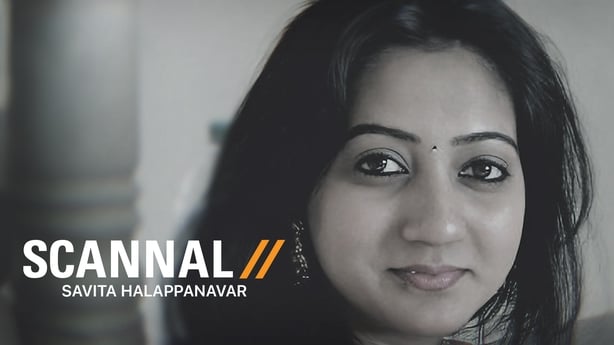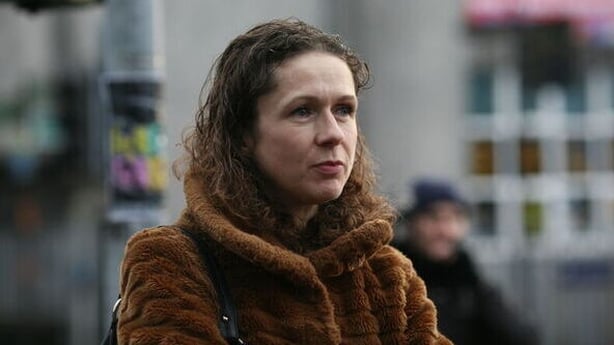This Tuesday the two-part documentary Scannal: Savita will start on RTÉ One. It tells the story of Savita Halappanavar, who was 17 weeks pregnant when she was admitted to University Hospital Galway in October 2012.
The doctors told her she was probably going to lose the baby, but Savita found it very distressing to wait to miscarry naturally, so she asked for a termination. The doctors were at that stage legally unable to give her medication to speed up the process, and a week later she died from septic shock.
Ceist dheighilteach í an ghinmhilleadh in Éireann ó thug reifreann 1983 comhionannas chearta na mbeatha don leanbh agus don mháthair araon. Ach nuair a chinn foireann Scannal súil siar a thabhairt ar bhás tragóideach Savita Halappanavar, thugamar ceann de cé chomh conspóideach is atá sí fós.

There have been several official reports into Savita’s death, but many people still vehemently disagree about whether her death was caused by medical misadventure or because she was denied an abortion due to the legal situation. In this Scannal we look at the evidence presented at the inquest, the HIQUA report and the HSE Inquiry into the events that led to Savita Halappanavar’s death.
Prof. Sabaratnam Arulkumaranh, the former president of the International Federation of Gynaecology and Obstetrics, who chaired the HSE Inquiry, also agreed to do an interview for this documentary.
Nuair a thosaigh láithreoir, Caoimhe Ní Laighin, taighdeoir, Áine Ní Choileáin agus mé féin ag obair ar an gclár seo, thugamar fé deara go raibh go leor daoine sa tionscal leigheas, chomh maith le lucht feachtais an dá thaobh - ar son na beatha agus ar son rogha - drogallach labhairt ar an taifead fén scéal seo óir go bhfuil sí fós féin achrannach.

But Savita’s death was a seismic event and twelve years later it was important to look back at how this story changed Ireland, particularly as it persuaded many voters in the 2018 referendum that it was necessary to legalise abortion.
Tá Scannal ar cheann de na sraithe fáisnéise is faide dá bhfuil ann in Éirinn, agus bunchloch a ráchairt ná bheith ag breathnú siar ar ócáidí conspóideacha móra le buntáiste an tsúil-siar ama sin. Lorgaímid i gcónaí cuiditheoirí gur féidir leo dearcadh úra agus tuiscintí phearsanta a thabhairt.
Beirní Ní Chuinn and Dr. Máire Treasa Ní Cheallaigh both covered this story as journalists and explain how challenging it was to report on Savita’s death as well as the aftermath. We also get the perspectives of Eilís Mulroy from Galway Pro Life and Dr Shubhangi Karmakar who was involved in the Repeal movement.

Déanann iriseoir an Irish Times, Kitty Holland, cur síos ar an gcaoi ar bhris sí scéala báis thragóideach Savita agus mar a d'fhorbair sé sin ina scéal nuachta idirnáisiúnta laistigh de chúpla lá.
For some people Savita’s death illustrates the importance of legal abortion, for others it's a tragedy that thousands of terminations are now carried out every year in Ireland. For me it is important that we never forget Savita Halappanavar.
Scannal: Savita, RTÉ One, 7pm, Tuesday 3rd of December and Tuesday 10th December.


